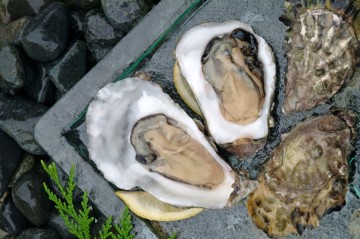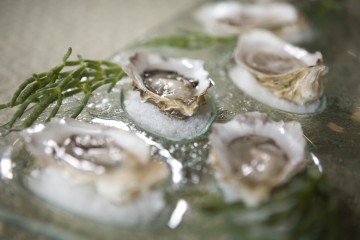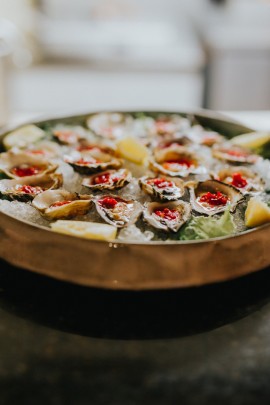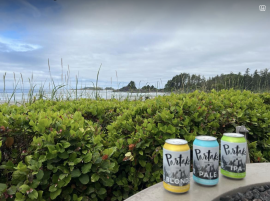Demystifying the Tofino and Clayoquot oyster
The Tofino oyster has its own mythology and place in West Coast and Vancouver Island loreFrom aphrodisiac qualities, to health benefits, to endless varieties, to flavours, to proper eating techniques to what exactly their role is in the ocean: there is a lot of oyster rumour, lore and even some facts out there.
In preparation for the Clayoquot Oyster Festival in Tofino, B.C., here is a series of primers to help build on the anticipation and offer some insight.
In this, the first installment, we tackle the most important topic first:
Are oysters really an aphrodisiac?
According to Adam Lusher, writing for The Telegraph in London, England, scientific studies have concluded that oysters are indeed aphrodisiacs: “Casanova, the 18th century lover who used to breakfast on 50 oysters, has been vindicated by a study that proves they really are aphrodisiacs,” wrote Lusher in a March, 2005 article.
According to Lusher, a team of American and Italian researchers analysed bivalve molluscs - a group of shellfish that includes oysters - and found they were rich in rare amino acids that trigger increased levels of sex hormones. The researchers’ findings were announced to 15,000 scientists in San Diego, California, at a meeting of the American Chemical Society in March 2005.
 |
 |
"I am amazed," said George Fisher, a professor of chemistry at Barry University, Miami, who led the research team with his graduate student Raul Mirza and Antimo D'Aniello, of the Laboratory of Neurobiology in Naples. "I have been a scientist for 40 years and my research has never generated interest like this.”
It is important to note that the scientists who authored the report emphasized that oysters have to be eaten raw to be most effective. Cooking them reduces the quantity of D-Asp and NDMA molecules – the elements that the scientists isolated and identified as having aphrodisiacal qualities.
Lusher noted that Casanova, who admitted seducing 122 women in his memoirs, followed the raw-oyster rule, but with his own twist: "I placed the shell on the edge of her lips and after a good deal of laughing, she sucked in the oyster, which she held between her lips. I instantly recovered it by placing my lips on hers."
Are raw oysters healthy?
There are many articles – scientific and otherwise – that suggest raw oysters are not only healthy, but are, in fact, remarkably nutritious. Author and popular food blogger Dina-Marie Oswald labels oysters "nutritional powerhouses" and lists the ways:
- Oysters contain more zinc than any other food. Zinc is necessary for proper growth and development, strengthens the immune system and promotes healing.
- Oysters are heart healthy. They are high in omega – 3 fatty acids, potassium and magnesium which can help reduce your risk of heart attack, stroke and lower blood pressure.
- Oysters can help you lose weight! They are low in calories, low in fat and a good source of protein which makes you feel fuller after eating.
- Oysters are a good source of other essential nutrients. These include vitamins A, E, and C, zinc, iron, calcium, selenium, and vitamin B12.
- Oysters can help improve your energy. They are a good source of iron which helps the body transport oxygen to individual cells giving you more energy.
- Oysters can help lower your cholesterol. A study done by the University of Washington found that eating oysters can help raise the HDLs (good cholesterol levels) and lower the LDL’s (bad cholesterol levels).
At the oyster bar, there are so many labels, originating locations and brands – how many types of oysters are there?
There are only five species of oysters in the world.
Yes, five.
They are: Atlantic, Pacific, Kumamoto, Olympias and Belons.
The Atlantics are found on the east coast of North America and down through the Gulf of Mexico. Most farm-raised oysters on the west coast are Pacific oysters which were introduced to the region from Asia. Kumamoto oysters are native to Japanese waters and were introduced to Pacific Northwest waters in the late 1940s. Olympias are the only oyster species native to the Pacific Northwest. Belons originate in France and are harvested in the Belon River.
While each oyster has its own unique shell features, size, growth rates and subtle flavours, it is the immediate waters and aquatic environment which lends each its own distinctive essence.
We will tackle that with the next post!
November is Oyster Month at Long Beach Lodge Resort
November is Oyster Month in Tofino! Come celebrate in Long Beach Lodge Resort's Great Room each Tuesday and Friday in November from 4:00 to 6:00 pm at our "Low Tide Oyster Bar." Chef Ian Riddick will be serving up some of the of the world's finest oysters, harvested from the cool, rich ocean around Tofino.








































